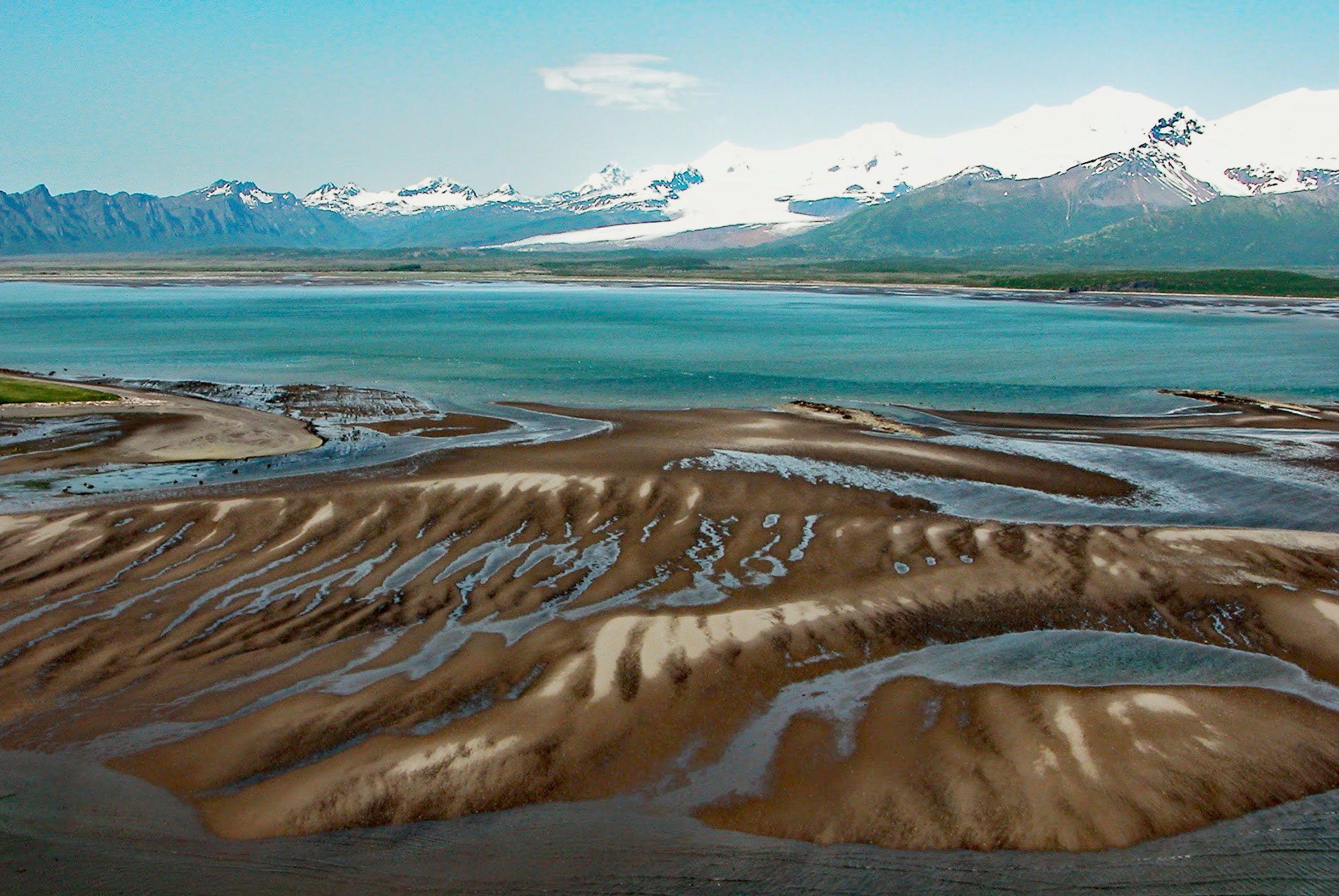Hallo Bay is a bight on the south coast of the Alaska Peninsula in Katmai National Park and Preserve, about 122 miles (197 km) southwest of Homer and 76 miles (123 km) northwest of Kodiak, Alaska. The name was first published in 1868 by the U.S. Coast and Geodetic Survey and is a transliteration of a native word. The native pronunciation of the name was similar to ‘hello’, according to William H. Dall in 1899; however in 1905, George C. Martin of the U.S. Geological Survey reported the native pronunciation as ‘Ayou’.
The shoreline of Hallo Bay is mostly a sandy beach with a very wide sand flat that is exposed at low tide. Ninagiak Island, the site of a former fox farm, dominates the center of the bay. Three glacial fed rivers drain into the bay, the Ninagiak River, Hook Creek, and Hallo Creek. Hallo Glacier is one of the larger glaciers in Katmai National Park draining east from Mount Steller in the Aleutian Range and ending in an expanding proglacial lake about 4 miles (6.6 km) west of Hallo Bay. The Hallo Glacier has retreated about 2000 feet (600 m) since 1985, which is similar to that of the nearby Fourpeaked and Spotted Glaciers.
Hallo Bay is a well-known bear watching destination and frequent day trips are made by small planes that land on the beach, as well as weekly excursions by charter boats from Homer. The large numbers of grizzly bears are attracted to the sedge meadows along the tidal flats of the bay, and also dig for razor clams in the sand flats, and catch salmon from the rivers. Learn more here and here. Explore more of Hallo Bay and the Katmai coast here:

